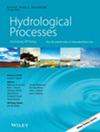Constructing an Integrated Model of Water and Salt Movement in Irrigation Districts
Abstract
Irrigation and drainage regulations significantly shape the water and salt dynamics in arid and semiarid irrigation districts. While many numerical models have been developed to study water and salt movement, few incorporate regulatory constraints. This study aims to enhance an existing water flow model by adding a salt transport module and conducting a sensitivity analysis, calibration and validation. The experiments were carried out in the Shahaoqu subirrigation zone of the Hetao Irrigation District in 2018 and 2019, with data on soil moisture and salinity, groundwater table and salinity and ditch water levels collected multiple times per month. A one-at-a-time sensitivity analysis assessed the impact of key parameters on irrigation, evapotranspiration, drainage, groundwater supply and soil water and salt concentration in the top 1 m, revealing that ditch spacing, saturated soil water content and specific yield were the most critical parameters. Model calibration and validation were performed with 2018 and 2019 data, respectively, achieving a Nash–Sutcliffe efficiency of 0.63 for both periods. It successfully simulated key phenomena such as salt leaching during initial irrigation and salt concentration increases in subsurface layers. This integrated model provides a valuable tool for simulating water and salt movement under varying irrigation and drainage regulations.

 求助内容:
求助内容: 应助结果提醒方式:
应助结果提醒方式:


